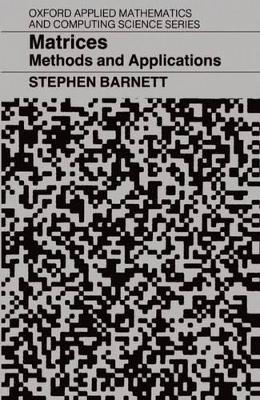Oxford Applied Mathematics & Computing Science
2 total works
Introduction to Mathematical Control Theory
by Stephen Barnett and R.G. Cameron
Published September 1975
The best concise account of the basic mathematical aspects of control has been brought completely up to date while retaining its focus on state-space methods and its emphasis on points of mathematical interest. The authors have written a new chapter on multivariable theory and a new appendix on Kalman filtering, added a large number of new problems, and updated all the references. This book will continue as a fundamental resource for applied mathematicians studying control theory and for control engineers and electrical and mechanical engineers pursuing mathematically oriented studies. From reviews of the first edition: "Excellent....Strongly recommended."--Bulletin of the International Mathematical Association. "Could hardly be bettered."--Times Higher Education Supplement
Techniques of matrix theory find wide application throughout engineering and the physical, life, and social sciences. Consequently, matrix methods comprise an important component in any 'tool kit' of applied mathematics. This wide-ranging textbook provides a clearly written and up-to-date account of these methods, suitable for both undergraduates and more advanced students.
The aim is to provide a down-to-earth approach with results illustrated by many examples drawn from the areas of application. The range of topics covered is large: from basic matrix algebra to advanced concepts such as generalized inverses and Hadamard matrices, and applications to error-correcting codes, control theory, and linear programming. In addition, the book contains numerous exercises, together with answers, making it ideal for students in any field where matrices are used.
The aim is to provide a down-to-earth approach with results illustrated by many examples drawn from the areas of application. The range of topics covered is large: from basic matrix algebra to advanced concepts such as generalized inverses and Hadamard matrices, and applications to error-correcting codes, control theory, and linear programming. In addition, the book contains numerous exercises, together with answers, making it ideal for students in any field where matrices are used.

